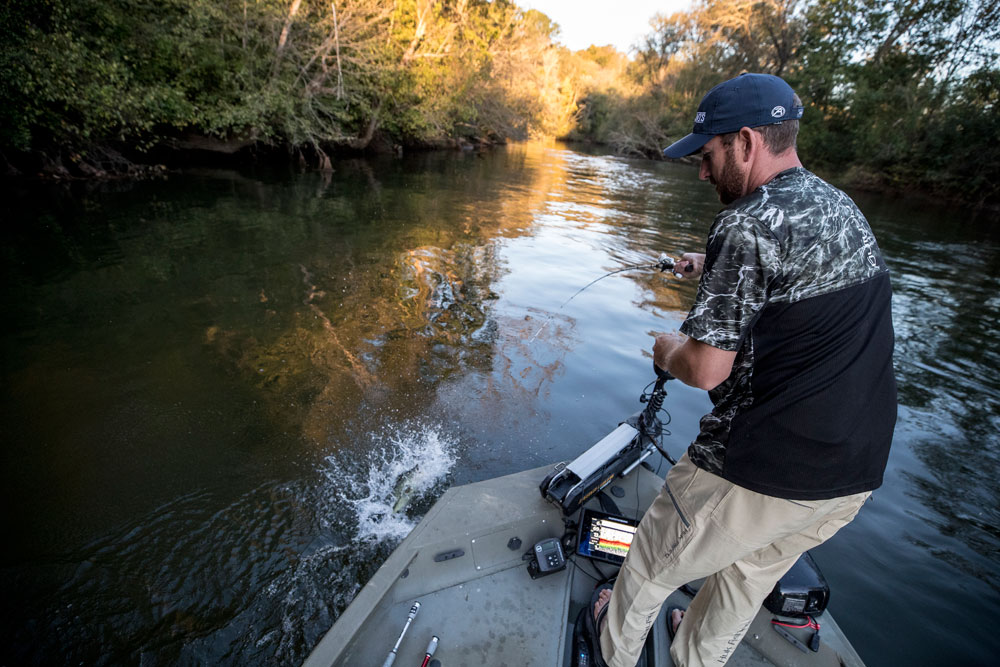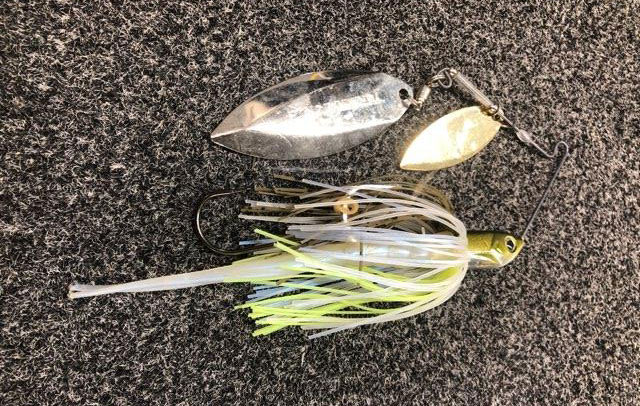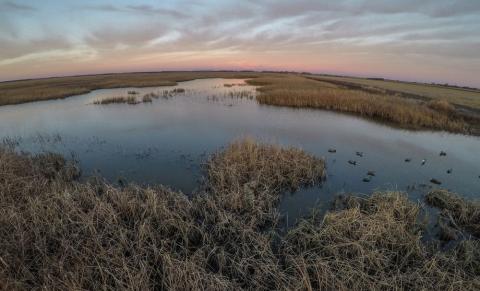provided by John E. Phillips
There’s no question about it, tackle does make a difference. New innovations, depth finders, lures, rods, reels and other equipment are allowing professional fisherman to catch as many or more fish than they have in the past. One of the most consistently successful pros is Ott DeFoe, winner of the 2019 Bassmaster Classic and ranked third in the world, according to BassFan.

Tackle to Pack for Long Times Away
I carry tackle in both my boat and truck, and most of the time I’ll have more than 35 rods and 35 reels in both my boat and my truck. I’ll carry one spool of 1,000 yards in different sizes of line in my truck. For example, I’ll have 6, 10, 12, 20 and several other sized spools of 1,000 yards of braided line and several hundred pounds of other tackle, including lures weights, sinkers and assorted other tackle I may need. I have a tackle tray in the bed of my truck and places for more lures in my boat. If I had to guess, I’ll probably have somewhere between 15,000 and 25,000 different bass lures of all shapes, sizes and colors in my boat and my truck when I’m going to be fishing multiple tournaments before I return home.
Rods: How to Select the Best for Your Fishing
In the past, bass fishermen could go to a hardware store and buy a steel rod. Later on, fiberglass rods became the show pony of the bass-fishing industry. Then they often were replaced with graphite rods, and today’s modern rods often have a variety of components in them. Today, most pro fishermen have specific rods to fish specific lures with, and often the pro’s name will be written on the rod.
When I’m fishing crankbaits, I’ll usually have two medium-heavy action rods. One will be 7’ l” and the other will be 7’ 6” long. I’ll use the 7-foot rod when I’m fishing closer targets than I will when I’m fishing targets further away from the boat. I’m primarily using that 7-foot rod in more-shallow water than I’ll use the 7’ 6” rod. When I’m fishing open and deep water, I’ll use the 7’ 6” rod to give more distance to my cast. I may fish with a shorter rod when I’m casting around docks. I may use a longer rod if I’m casting around grass.
Rod selection usually has to do with the distance of the cast you want to make as well as the type of cover you’ll be fishing. These two medium-action heavy rods I’ve mentioned above are composite rods and have enough power to allow me to drive a crankbait hook deep into a bass’s jaw and enough parabolic bend, so I won’t pull the hooks out of the fish’s mouth. One of the main reasons tournament anglers use different rods for various lures, types of cover and depths of water is to increase the number of bass they land after they set their hooks. At the end of the day, that’s the reason we use different kinds of rods - to put more bass on the boat.
The lure is designed to get a bass to bite. The line is designed to get a good hook set and to keep the bass coming to the boat. The various kinds of rods are designed to keep the line tight, and the hook stuck in the bass’s mouth and deliver the bass to the hand of the angler where he puts the bass in the boat. For instance, I don’t use a crankbait rod to fish a plastic frog. I probably may get the same number of bites on a frog as I do on a crankbait. However, I won’t land as many bass that attack the frog as I will land that attack the crankbait, if I use the same rod to fish both lures.

I’ve learned that the kind of lure I’m using determines the type of action that I need built into my rod. For example, if I’m fishing a single, open-hook bait or a lure with treble hooks, I’ll always use a lighter-action rod. I’ve found that I need a softer rod when I’m fishing these types of lures than I need when I’m fishing another type of lure. If I’m fishing a soft-plastic lure and have the hook rigged weedless, or it has a weed guard on it, and I’ll be fishing those lures in heavy cover, I know that I need to have a heavier-action rod not only to set the hook on the bass but to drag it out of that heavy cover. These times and circumstances are when you need a heavier-action rod. The length of your cast also determines the action that you need and the length of rod you should choose. If I’m going to make a long cast, I want a long rod like a 7’2” to a 7’6” rod. If I’m casting shorter distances, I’ll choose a 6’6” rod up to a 7-foot rod.
Rods to Have on Your Casting Deck
When I’m fishing, I like to have no more than five rods on my casting deck because I don’t want much clutter on my casting deck. Having said this, I often may have 12 different rods on my casting deck. I line my rods up according to the type of lures I have tied on to each rod. I like to have the lures with treble hooks on one side of the boat, and the lures with single hooks on the other side of the boat.
To learn more about Ott DeFoe, visit his Facebook page.






























